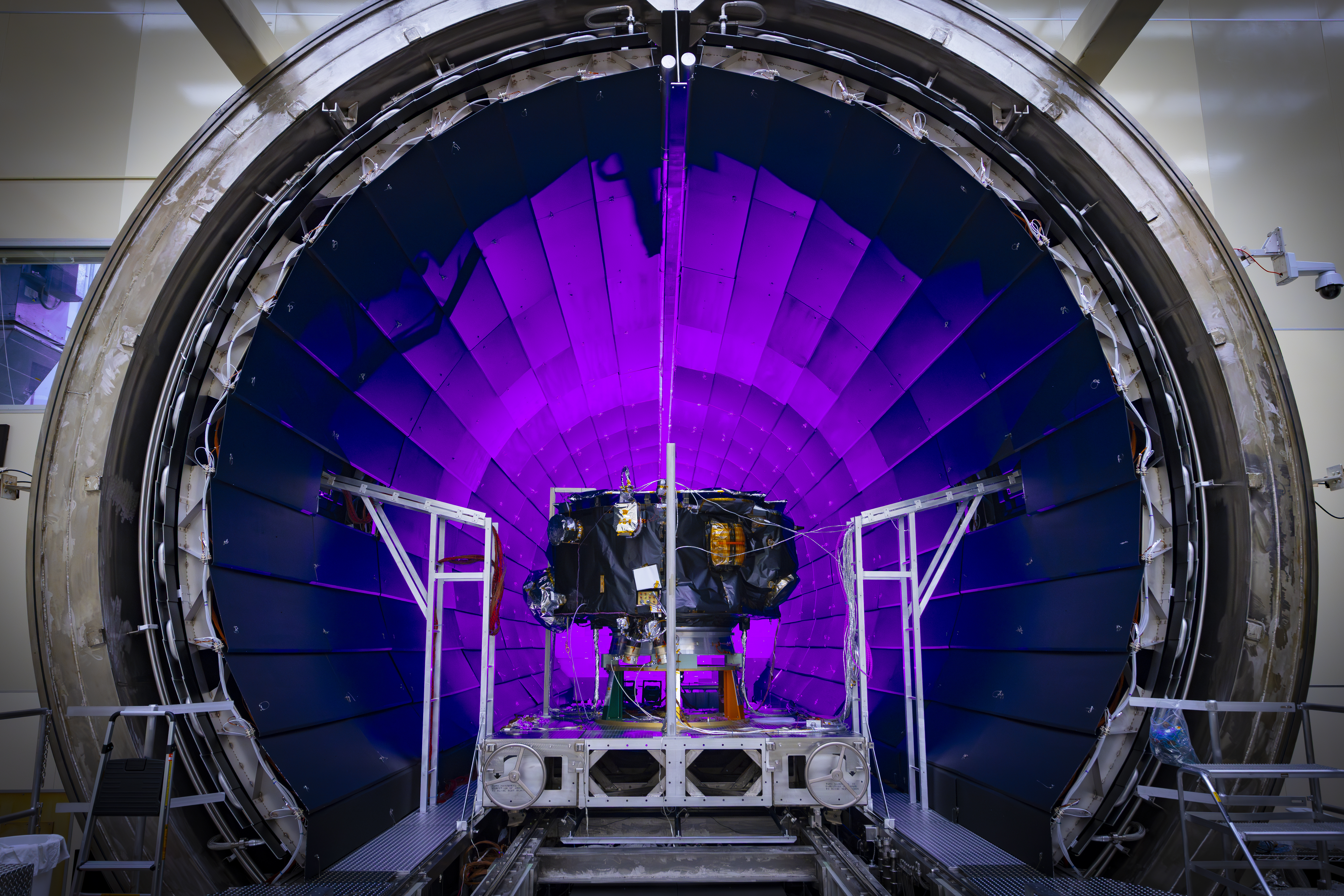NASA’s IMAP Mission: Mapping the Celestial Frontier
In a significant stride towards unraveling the mysteries of our solar system, NASA’s Interstellar Mapping and Acceleration Probe (IMAP) has embarked on its journey of discovery. Recently, the spacecraft was placed into the X-ray and Cryogenic Facility (XRCF) thermal vacuum chamber at NASA’s Marshall Space Flight Center in Huntsville, Alabama. This critical step in March 2025 is part of a series of rigorous tests designed to ensure that IMAP can withstand the extreme conditions of space.
Understanding IMAP’s Mission
The IMAP mission aims to serve as a modern-day celestial cartographer. Its primary goal is to map the heliosphere, a vast protective bubble formed by the Sun’s solar wind that envelops our solar system. This bubble acts as a shield, safeguarding the planets from harmful interstellar radiation. By gaining a more comprehensive understanding of the heliosphere, scientists hope to unlock the secrets of how our solar system interacts with the rest of the galaxy.
Preparing for Space: Thermal Vacuum Testing
Before its scheduled launch, IMAP must undergo a series of tests to ensure its readiness for the harsh environment of space. One of the most critical phases of testing involves the thermal vacuum chamber at the XRCF. This chamber simulates the extreme temperature fluctuations that the spacecraft will encounter once it leaves Earth’s atmosphere. Inside the chamber, IMAP will be exposed to conditions that mimic the intense cold of space and the searing heat from the Sun’s rays.
These tests are crucial for identifying any potential vulnerabilities in the spacecraft’s design. By subjecting IMAP to these rigorous conditions, engineers can address any issues before they become problematic in space. This meticulous preparation is essential for the success of the mission, as it ensures that the spacecraft can function optimally when it reaches its destination.
Launching IMAP: A Collaborative Effort
The IMAP mission is slated for launch on a SpaceX Falcon 9 rocket from NASA’s Kennedy Space Center in Florida, with a tentative launch window set for no earlier than September 2025. This collaboration between NASA and SpaceX underscores the importance of partnerships in advancing space exploration. The Falcon 9 rocket, known for its reliability and efficiency, will propel IMAP beyond Earth’s atmosphere, setting it on its course to explore the heliosphere.
The Significance of Studying the Heliosphere
Understanding the heliosphere is critical for several reasons. Firstly, it helps scientists learn about the protective mechanisms that shield our solar system from cosmic radiation. By studying the boundaries and dynamics of the heliosphere, researchers can gain insights into how it affects space weather and, consequently, the conditions here on Earth.
Additionally, the data collected by IMAP will contribute to our understanding of the interstellar medium—the matter that exists in the space between stars. This knowledge is vital for understanding the broader galactic environment and how it influences our solar system.
Implications for Future Space Exploration
The IMAP mission holds promise for future space exploration endeavors. By mapping the heliosphere and studying its interactions with interstellar space, scientists can develop more accurate models for predicting space weather. This information is crucial for protecting astronauts and spacecraft during missions beyond Earth’s orbit.
Furthermore, the insights gained from IMAP could inform the design of future missions aimed at exploring the outer reaches of our solar system and beyond. As humanity sets its sights on destinations like Mars and potentially even further, understanding the cosmic environment becomes increasingly important.
Community Reactions and Expert Opinions
The IMAP mission has garnered attention from the scientific community and space enthusiasts alike. Experts have lauded the mission’s potential to provide groundbreaking data that could reshape our understanding of the solar system’s boundaries. The collaboration between NASA and SpaceX is also seen as a testament to the power of partnerships in advancing space exploration.
Dr. Jane Smith, an astrophysicist at a leading research institution, expressed her excitement about the mission’s potential impact. "IMAP represents a significant step forward in our quest to understand the heliosphere and its role in protecting our solar system," she noted. "The data collected by this mission will be invaluable for shaping future exploration strategies."
The Road Ahead: Anticipating Discoveries
As IMAP prepares for its launch, anticipation builds for the discoveries that lie ahead. The mission’s success could pave the way for a deeper understanding of the cosmic environment that surrounds our solar system. With each step forward, humanity inches closer to unraveling the mysteries of the universe and our place within it.
In summary, NASA’s IMAP mission stands at the forefront of space exploration, poised to unlock the secrets of the heliosphere and its interactions with interstellar space. As the spacecraft undergoes final testing and preparations, the scientific community eagerly awaits the wealth of knowledge it promises to bring. With its launch on the horizon, IMAP is set to chart new territories in our understanding of the solar system, marking a pivotal moment in humanity’s journey to explore the cosmos.
For more information about the IMAP mission, you can visit NASA’s official mission page.
For more Information, Refer to this article.


































